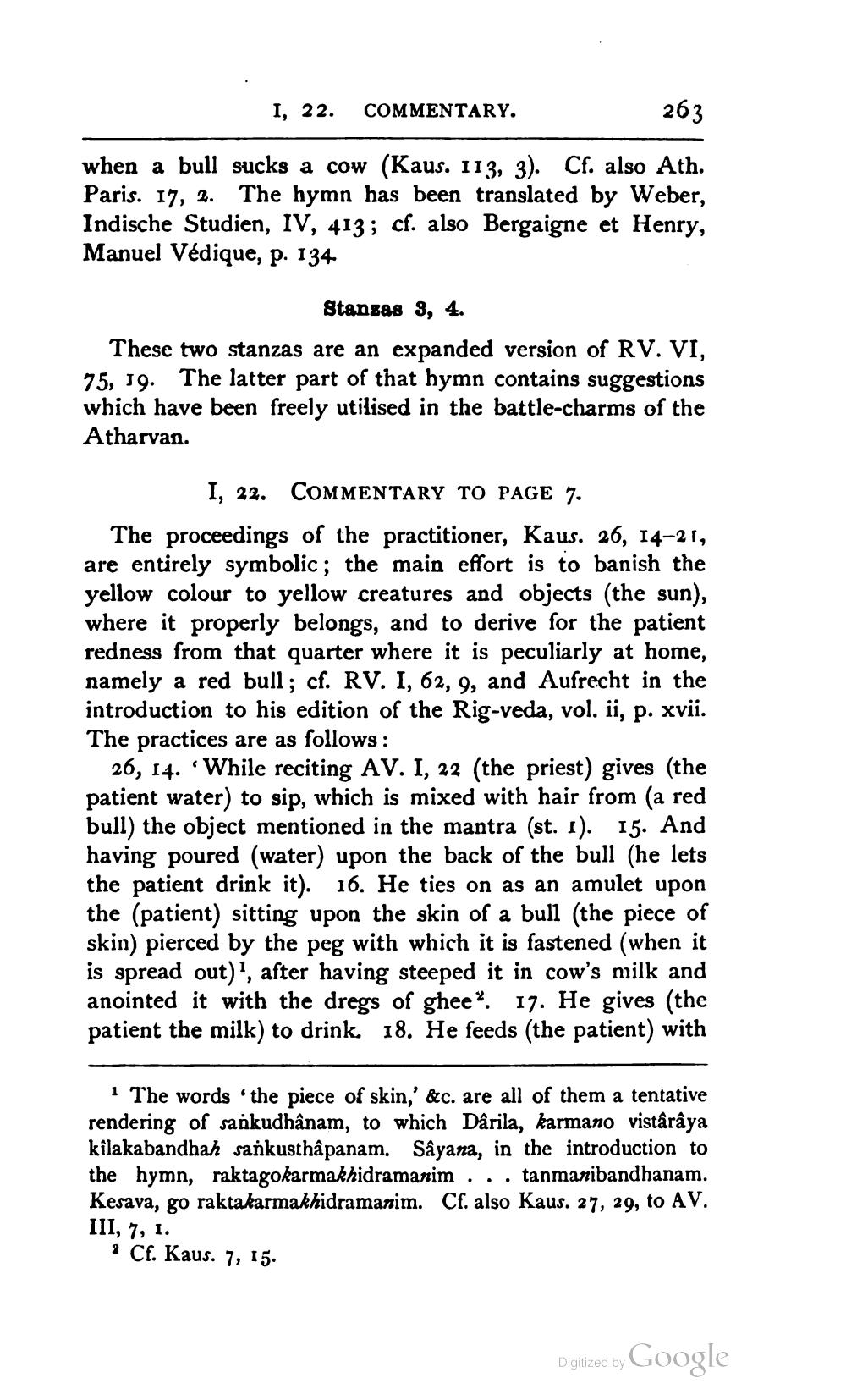________________
I, 22. COMMENTARY.
263
when a bull sucks a cow (Kaus. 113, 3). Cf. also Ath. Paris. 17, 2. The hymn has been translated by Weber, Indische Studien, IV, 413; cf. also Bergaigne et Henry, Manuel Védique, p. 134
Stangas 3, 4. These two stanzas are an expanded version of RV. VI, 75, 19. The latter part of that hymn contains suggestions which have been freely utilised in the battle-charms of the Atharvan.
I, 22. COMMENTARY TO PAGE 7. The proceedings of the practitioner, Kaus. 26, 14-21, are entirely symbolic; the main effort is to banish the yellow colour to yellow creatures and objects (the sun), where it properly belongs, and to derive for the patient redness from that quarter where it is peculiarly at home, namely a red bull; cf. RV. I, 62, 9, and Aufrecht in the introduction to his edition of the Rig-veda, vol. ii, p. xvii. The practices are as follows:
26, 14. While reciting AV. I, 22 (the priest) gives (the patient water) to sip, which is mixed with hair from (a red bull) the object mentioned in the mantra (st. 1). 15. And having poured (water) upon the back of the bull (he lets the patient drink it). 16. He ties on as an amulet upon the (patient) sitting upon the skin of a bull (the piece of skin) pierced by the peg with which it is fastened (when it is spread out)', after having steeped it in cow's milk and anointed it with the dregs of ghee. 17. He gives (the patient the milk) to drink. 18. He feeds (the patient) with
1 The words the piece of skin,' &c. are all of them a tentative rendering of sankudhânam, to which Darila, karmano vistârâya kilakabandhah sankusthapanam. Sâyana, in the introduction to the hymn, raktagokarmakhidramanim . . . tanmanibandhanam. Kesava, go raktakarmakhidramanim. Cf. also Kaus. 27, 29, to AV. III, 7, 1.
3 Cf. Kaus. 7, 15.
Digized by Google




